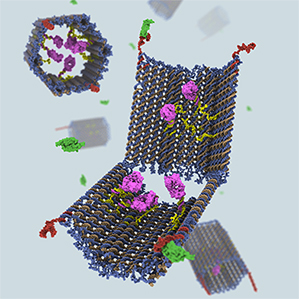What Can DNA-Based Computers Do?
For more than 20 years, researchers have explored how DNA could be used as a material for computing. It sounds promising because of the incredible density of data in DNA: it stores all the information and instructions required to build and run a human body. Some researchers have managed to encode long texts into DNA; others have used the molecule to create simple logic gates and circuits, the basic building blocks of computing. But using DNA in this way is untenably slow for the kinds of jobs we expect computers to do. Most likely, DNA computing will be harnessed to work inside living cells and combine with their existing machinery, making new methods of disease detection and treatment possible.

How does it work?
Traditional computers use a series of logic gates that transform different inputs into a predictable output. For example, a transistor is turned on or off by the input of high or low voltage. With DNA, the way the molecules can be triggered to bind with each other can be used to create a circuit of logic gates in test tubes. In one method, called DNA strand displacement, the input of DNA that binds to a DNA logic gate displaces a strand of DNA that serves as the output. Many gates can be combined in a circuit: each output DNA will bind to the next logic gate until some predictable terminal output strand is liberated. (Scientists can make the terminal strand fluoresce so it can be easily read.)
In another method, input DNA can bind to a DNA logic gate and activate naturally occurring enzymes such as polymerases and nucleases to cut strands of DNA. These can then bind with other strands in a continuing series of reactions or show a fluorescent output signal.
Living cells
Researchers in Israel showed last year that DNA logic gates can also work inside living animals—cockroaches, in particular. The researchers created DNA folded like origami to make what they called nanoscale robots. The nano-robots function as the input strand in the computing sequence: they bind to DNA logic gates, a process that changes the shape of the robots so they expose their payload. The payload can be a molecule such as a short DNA sequence, an antibody, or an enzyme. If the payload can activate or inactivate a second robot, this will create a circuit inside a living cell.
Other researchers have also shown, in early-stage work, how DNA computers might be used for extremely accurate detection of cancers. They would do this by generating a certain output if a cell is expressing too much of a certain gene or has particular sequences of microRNA.
A new language
DNA-based computing demands something like a new programming language. Initial experiments used models of the reactions that occur with a given set of ingredients. Microsoft has since developed a language it calls the DNA Strand Displacement tool, which can be used to design the DNA sequences needed to run circuits and can model how the reactions will occur in each circuit.
The takeaway
DNA computing technology is unlikely to replace conventional silicon computers. But within five to 10 years DNA-based computers could be tested for medical applications.
Do you have a big question? Send suggestions to questionoftheweek@technologyreview.com.
Deep Dive
Computing
Inside the hunt for new physics at the world’s largest particle collider
The Large Hadron Collider hasn’t seen any new particles since the discovery of the Higgs boson in 2012. Here’s what researchers are trying to do about it.
How ASML took over the chipmaking chessboard
MIT Technology Review sat down with outgoing CTO Martin van den Brink to talk about the company’s rise to dominance and the life and death of Moore’s Law.
How Wi-Fi sensing became usable tech
After a decade of obscurity, the technology is being used to track people’s movements.
Algorithms are everywhere
Three new books warn against turning into the person the algorithm thinks you are.
Stay connected
Get the latest updates from
MIT Technology Review
Discover special offers, top stories, upcoming events, and more.